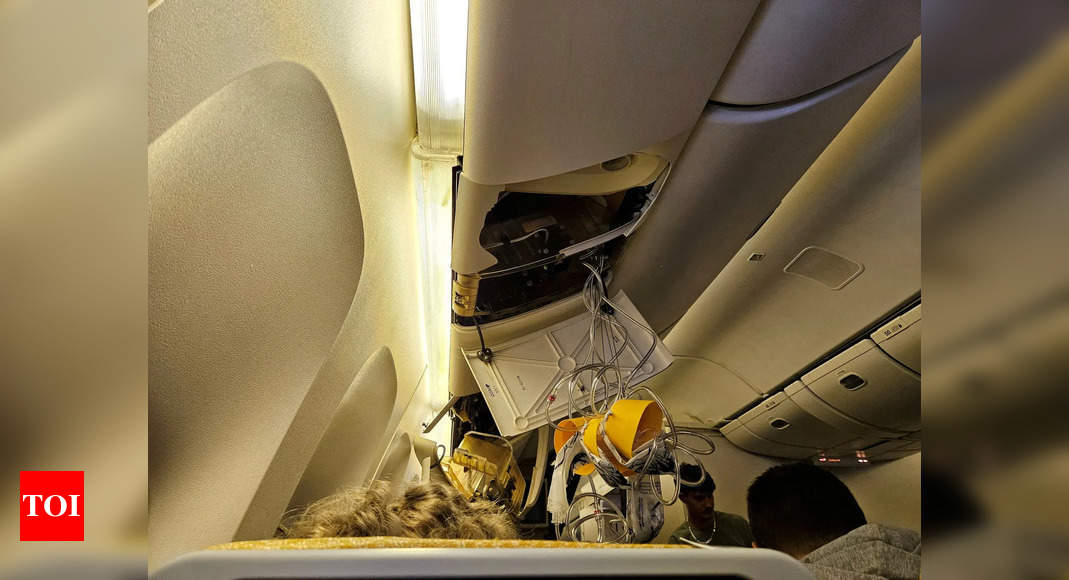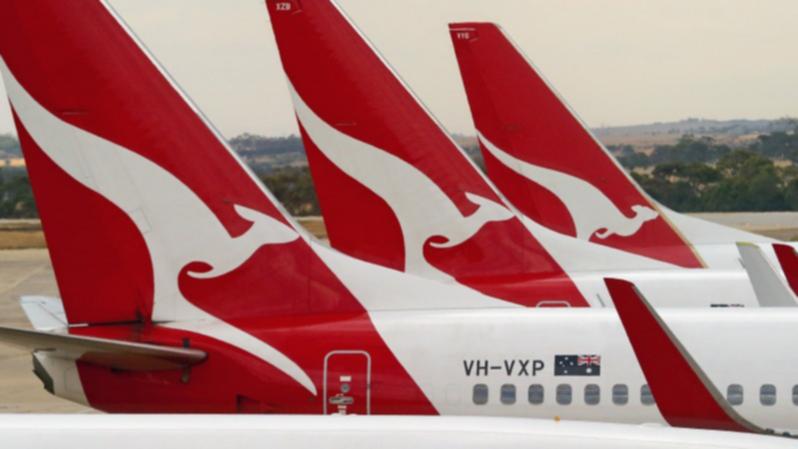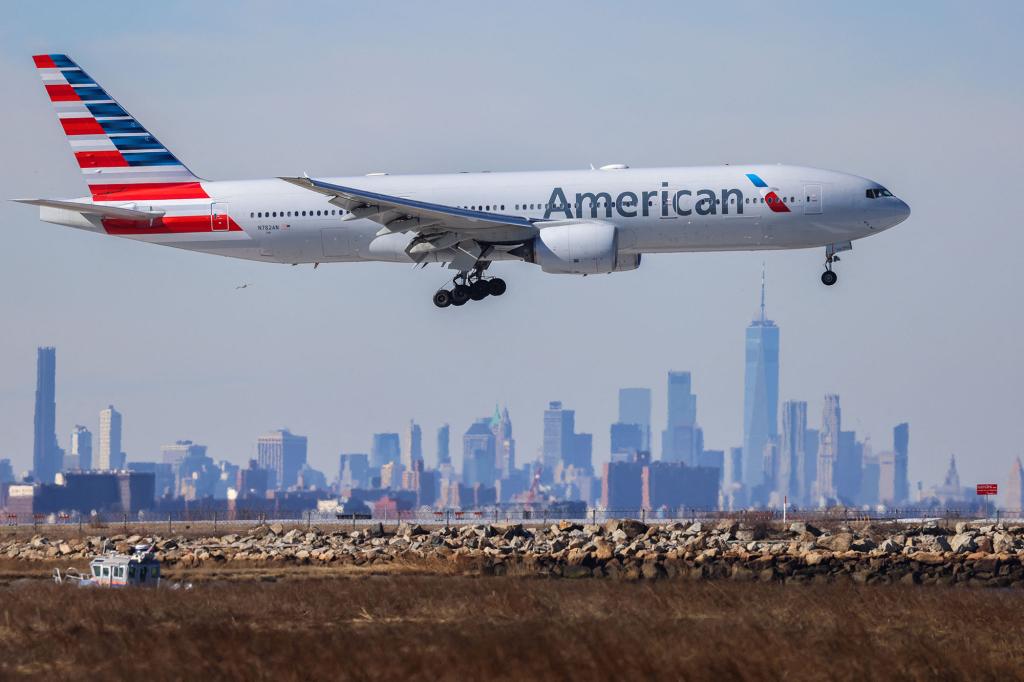Often known as the “hub of hubs” by airline industry observers, Los Angeles International Airport
(LAX) is the only US airport that serves as a hub for all three major legacy airlines in addition to multiple other carriers. Delta Air Lines, United Airlines, and American Airlines all have major hubs at the facility, and the airport serves destinations across the globe.
The facility is the largest international airport in both the Los Angeles metropolitan area and the entire state of California as a whole and is located in Westchester, about 18 miles southwest of downtown Los Angeles. The region surrounding the facility is primarily commercial and residential, with highways linking the facility to the region.
Photo: Markus Mainka | Shutterstock
In 2023, the airport saw over 75 million passengers pass through its doors, and the facility’s traffic numbers only continue to grow. With four massive runways and convenient access for business travelers to the central business district of Los Angeles, the facility is among one of the most important for US airlines and is likely to generate more revenue for carriers collectively than any other hub.

Los Angeles International Airport
- IATA/ICAO Code
-
LAX/KLAX
- Country
-
United States
- CEO
-
Justin Erbacci
- Terminals
-
Terminal 1 |
Terminal 2 |
Terminal 3 |
Tom Bradley International Terminal | Terminal 4 |
Terminal 5 |
Terminal 6 |
Terminal 7 |
Terminal 8
While financial data regarding the amount of money made by airlines specifically through serving traffic to and from LAX is kept secret, it is no secret that airlines will fiercely compete to ensure that they can get as large a slice as possible of the profits that are to be made by operating flights to Los Angeles. In this article, we will take a deeper look at the five largest carriers by market share at LAX and further examine which carriers have the lead in the race to dominate the market at this coveted facility.
1
Delta Air Lines
The Atlanta-based carrier is currently edging out its rivals to be the largest airline at LAX
|
Category: |
Delta Air Lines LAX Statistic: |
|---|---|
|
Annual passenger capacity: |
14.8 million |
|
Market share: |
19.76% |
While Delta Air Lines is likely best known for its fortress hubs at airports like Atlanta Hartsfield-Jackson International Airport (ATL), Minneapolis/St. Paul International Airport (MSP) and Seattle-Tacoma International Airport (SEA), the airline is also the largest carrier at the heavily competitive hub that is LAX. The airport serves as somewhat of a secondary hub for the airline on the West Coast, with Seattle mostly serving as the linchpin of the airline’s Asian network.

Related
Delta Air Lines’ Centennial Year Takes Off With Innovation, AI, & New Partnerships
The legacy carrier plans to enhance the travel experience for its frequent fliers through collaborations with Uber, YouTube, and NFL star Tom Brady.
The carrier does, however, operate several transpacific flights from Los Angeles, including many notable destinations in Australia and Oceania. These flights include those to destinations such as Sydney International Airport (SYD), Auckland Airport (AKL), and Faa’a International Airport (PPT), the largest airport in French Polynesia.
Photo: OLOS | Shutterstock
The airline’s bread and butter, however, is the transcontinental routes that it operates from Los Angeles, which are heavily saturated with premium traffic, as business travelers are constantly traveling from major East Coast business hubs to the LA area. These transcontinental nonstop flights offer Delta the opportunity to sell tickets in the premium cabins at even higher prices, as business travelers will pay top-dollar for lie-flat seating on these nonstop services.
For these reasons, Delta even operates a handful of widebody domestic services from its West Coast hubs to cities along the Eastern seaboard. Legacy airlines like Delta often derive a strong portion of their revenue from seats in its Delta One cabin, which often includes a mix of corporate travelers and high-spending vacationers.
2
American Airlines
The Dallas-based airline continues to build out its network from LAX
|
Category: |
American Airlines LAX Statistic: |
|---|---|
|
Annual passenger capacity: |
11.2 million |
|
Market share: |
14.95% |
Unlike Delta, which has a secondary Pacific hub in Seattle, and United, which has hubs at both San Francisco International Airport (SFO) and Antonio B. Won Pat International Airport (GUM) in Guam, American Airlines has just one West Coast hub. The airport is very much the linchpin of the airline’s sun-belt-obsessed network when it comes to transpacific flights. The carrier’s operations at LAX are extensive, although according to statistics from the airport’s management authority, American’s market share still lags behind that of Delta at the airport.
Despite this, American does serve nine of the ten busiest domestic routes operated from LAX, with the only one it does not fly being the route to Newark Liberty International Airport (EWR). It does, however, offer flights from Los Angeles to John F. Kennedy International Airport (JFK) and provides connecting itineraries from Los Angeles to both Newark and LaGuardia.
1:34

Related
Why Don’t Delta & American Airlines Fly To The UAE?
Delta used to fly to Dubai but cut its service in 2016.
The airline, much like Delta, also looks to capture a major share of premium passenger travel demand to and from Los Angeles and also uses widebody jets at times to serve flights across the country. The airline even deploys its Airbus A321T (T for transcontinental) on many routes across the country, which features economy class seats in a 3-3 configuration, business class seats in a 2-2 configuration, and even a first-class cabin with 1-1 seating.
3
United Airlines
United is just behind American in terms of market share at LAX
|
Category: |
United Airlines LAX Statistic: |
|---|---|
|
Annual passenger capacity: |
11.1 million |
|
Market share: |
14.82% |
United Airlines, as previously mentioned, really has its focus elsewhere when it comes to operations on the West Coast, with the carrier maintaining a massive market share and strategic foothold in San Francisco. Nonetheless, with the Los Angeles market being far too attractive to abandon, United does have a decent presence at LAX as well, although its operations fail to rise to the scale of American’s or Delta’s.
Photo: Angel DiBilio | Shutterstock
According to statistics from the Bureau of Transportation, United Airlines operates seven of the ten busiest domestic routes from LAX, with the airline lacking direct nonstop service to New York’s JFK, Dallas/Fort Worth International Airport (DFW), and Atlanta. The airline’s international network from LAX is also a bit weaker than its competitors, with the airline only operating five of the ten busiest international routes from the facility.
4
Southwest Airlines
Southwest is the largest low-cost carrier at LAX by market share
|
Category: |
Southwest Airlines LAX Statistic: |
|---|---|
|
Annual passenger capacity: |
7.1 million |
|
Market share: |
9.53% |
Southwest Airlines, a low-cost carrier with an operating base at LAX, currently ranks as the facility’s largest low-cost carrier, beating out competitors like Spirit Airlines and Frontier Airlines for the largest share of the airport’s discount travel market. The airline does face some competitive pressures from legacy carriers that are now beginning to offer discounted basic economy tickets, something which has forced them to continue innovating their LAX-based route network.
Photo: Markus Mainka | Shutterstock
Southwest is the first carrier discussed so far that will be adding a new US destination from LAX to its route map this upcoming year, with new nonstop flights to Orlando International Airport (MCO) set to launch on August 5th. This new cross-country route will be served once daily by the airline’s Boeing 737 aircraft, according to Travel + Leisure.
.jpg)
Southwest Airlines
- IATA/ICAO Code
-
WN/SWA
- Year Founded
-
1967
- CEO
-
Robert Jordan
- Country
-
United States
5
Alaska Airlines
The airline has continued to expand its presence at LAX
|
Category: |
Alaska Airlines LAX Statistic: |
|---|---|
|
Annual passenger capacity: |
4.8 million |
|
Market share: |
6.48% |
Due to the extensive level of consolidation within the US aviation industry, there are not that many US airports where the fifth-largest carrier has a market share of over 6%. However, at LAX that is the case. ![]() Alaska Airlines
Alaska Airlines
has long been aware that continued expansion of its network from LAX would prove essential for its long-term financial success.
Photo: Wenjie Zheng | Shutterstock
The airline’s goals of expansion at LAX were a key factor motivating its 2016 acquisition of Virgin America, as it was able to acquire several coveted landing slots at the facility. Now that the airline has merged with Hawaiian Airlines, which had a 1.29% market share at LAX in 2023 (the last year for which we currently have data), its market share growth at the facility is only set to continue.













